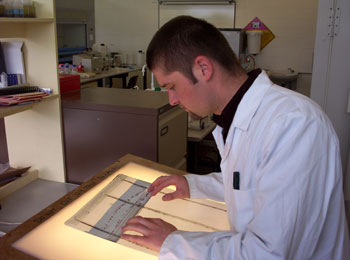| 2003 |

|
YEAR BOOK |
Galway-Mayo Institute of Technology
|
Population genetics of zebra mussel
(Dreissena polymorpha,
Pallas)
|

Ten selected populations from Ireland (Limerick, Lough Derg, Lough Key, Assaroe), Black Sea, Holland, England and North America (Lake Ontario and Lake St Claire) were tested for genetic heterogeneity at three trinucleotide microsatellite loci. In addition, variation was analysed in the Irish populations using eight polymorphic protein (allozyme) markers.
Irish populations exhibit similar levels of heterozygosity at both allozyme (0.37-0.45) and microsatellite loci (0.33-0.47) to those reported for European and North American populations, indicating that the number of individuals in the Irish founder population(s) was not small or that frequent mixing through gene flow has occurred post-introduction.
Pairwise comparisons of allele frequencies at microsatellite loci indicated little genetic differentiation between Irish and UK populations (Fst values 0-0.05), which could in fact reflect an English origin of Irish zebra mussels. By contrast, Irish populations appeared to be more genetic differentiated from American populations (Fst = 0.01-0.08), but also from populations from Holland (Fst = 0.02-0.09) and the Black Sea (Fst = 0.03-0.11).
Pairwise Fst values for microsatellite loci were positively correlated with geographic distances, whereas no such correlations could be established for the allozyme data.
Tests for linkage disequilibrium failed to show significant disequilibria between any microsatellite or allozyme locus pair (P < 0.05), proving the absence of linkage bias in the results.
This study is funded under the Enterprise Ireland Basic Research Grant Scheme 2001-2004.
Contact: Iulian Astanei, Dr Elizabeth Gosling, Molecular Ecology Group, Department of Life Sciences, GMIT, Dublin Road, Galway;
E-mail: [email protected] , [email protected]